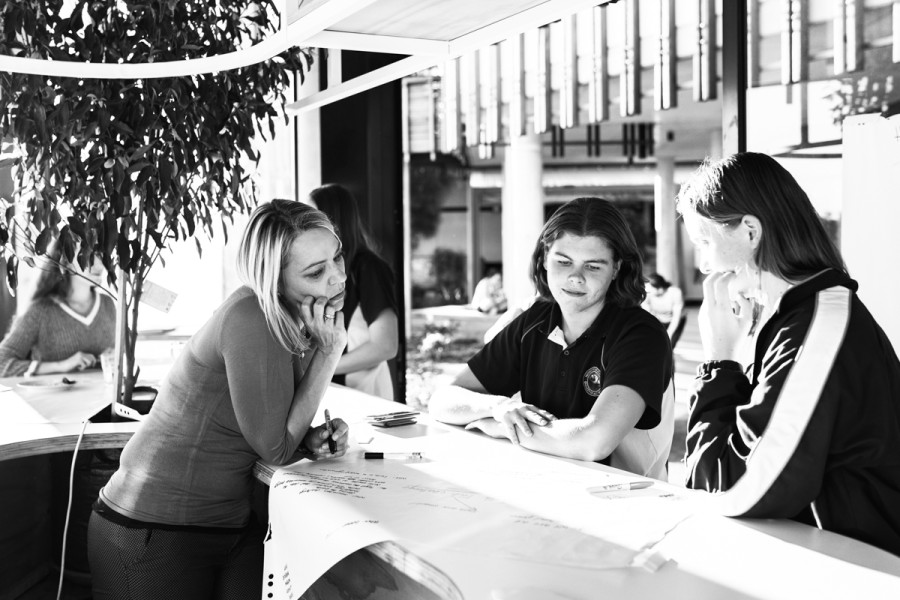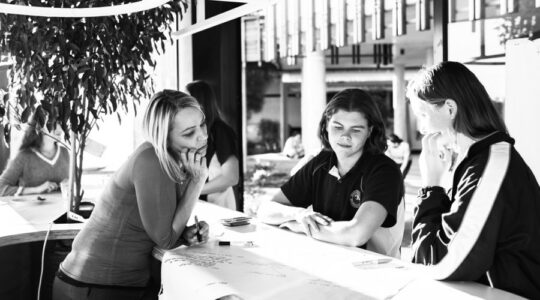Deeply understanding our learner’s home life is critically important right now, probably more important than what technology is being provided free to use or how we train and develop our teachers to move their classes and curriculum online.
What is most important is we take a little time to consider is what does home and home learning actually look and feel like for each and EVERY child in our care!
We are experiencing home learning on-mass and quickly. What usually takes months or years to roll-out in schools, is being given days or a few weeks in homes. Public and private school teachers are designing classes and learning activities from their own homes, surrounded by their family and using their own home internet access, to deliver their classes and activities to students in theirs. This is a school designed home learning challenge of epic proportion, calling for all of us to be patient and kind to teachers and families, as well as those supporting them.
A social design challenge we face in this as educators and school leaders is adjusting our expectations of time, school, our teachers, our families and especially our expectations of our children.
We need to be mindful of our biases for everyone is navigating this new reality of home learning, differently.
To achieve this we need to invest a little time and resources in truly understanding home learning from the home and lens of our learners and their families and leave our biases or expectations firmly back at school. To do this we can share a survey with parents and guardians. We also as educators and many parents experiencing home learning ourselves, can use our highly tuned active listening and observing skills while we set-up and roll-out the learning design as it is taking place. We can also just talk with our families through the screen. One to one or one to many. It might take a little time, yet it will be moments very well spent in the lives of our families.
To help guide this process, I advise on the use of what I call — “The Who, The Where and The Who With of Learning Design”. These three things are critically important in the design of any learning experience — be it on-campus, face to face, distance, home or mediated learning.
- The Who: Listening to the learner and where they are developmentally, socially as well as psychologically is very important. Children are on a journey of discovery and we need to join them at their pace in their home surrounded by their family and things, more than us in ours. Just because we can use the technology or have access to good Internet and feel okay with this new reality (for now) doesn’t mean our learners or the people in their home caring for them do too.
Being learner-centric means putting our learners at the center of ALL our decisions, not just the popular or convenient ones.
- The Where: Understanding the home environment, access to technology, the speed of the Internet connection, school, craft, and food supplies, as well as what is space like at home? Do they live in an apartment, a house? How many people are at home, does the school schedule (if provided) work for the family? Are they sharing technology or a desk with a sibling or maybe three? What is the food like at home? Are they eating or sleeping? Which cultural elements does the family live and share in? These are just some questions to ask to help figure out what our learners really need and are experiencing right now.
- The Who With: Whom are our students learning with? Who is facilitating the learning at home – is it a parent, a sibling, a grandparent? Multiple people? Or perhaps no one can or is helping? How confident does the guardian feel in helping their child/student? What was their own schooling like? Which languages do they naturally live, work and learn in? What are their work commitments? Are they even home or still going out to work? What support may they need? Are they struggling financially? Getting to know the guardian community, as well as the wider family and people around our students, can help to deepen our understanding of what support may be needed and when.
These are just three areas of questioning, listening, and observation that we can use as educators and school leaders alike, right now. The information from which will help us in continuing to design truly meaningful, personal and positive home and distance learning experiences as we continue to roll them out.
Experiences, we all hope will be supportive of all our learners, no matter where they are, who they are with, or what learning really looks and feels like for them at home.

